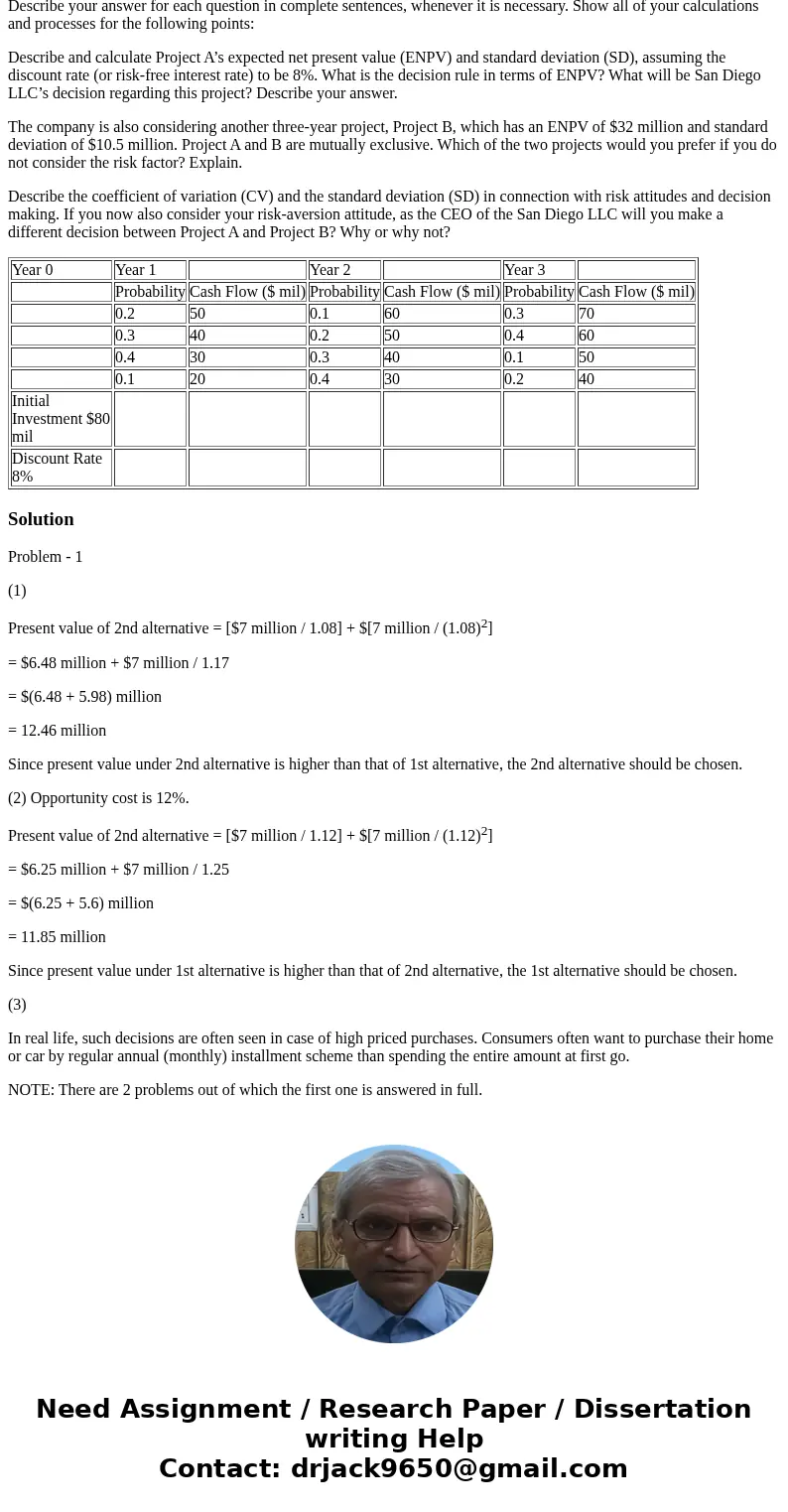BUS 640 Managerial Economics I need help Economics of Risk
BUS 640: Managerial Economics - I need help.....
Economics of Risk and Uncertainty Applied Problems
Please complete the following two applied problems. Show all your calculations and explain your results.
Problem 1:
A generous university benefactor has agreed to donate a large amount of money for student scholarships. The money can be provided in one lump sum of $12 million in Year 0 (the current year), or in parts, in which $7 million can be provided at the end of Year 1, and another $7 million can be provided at the end of Year 2.
Describe your answer for each item below in complete sentences, whenever it is necessary. Show all of your calculations and processes for the following points:
Assuming the opportunity interest rate is 8%, what is the present value of the second alternative mentioned above? Which of the two alternatives should be chosen and why?
How would your decision change if the opportunity interest rate is 12%?
Provide a description of a scenario where this kind of decision between two types of payment streams applies in the “real-world” business setting.
Problem 2:
The San Diego LLC is considering a three-year project, Project A, involving an initial investment of $80 million and the following cash inflows and probabilities:
Describe your answer for each question in complete sentences, whenever it is necessary. Show all of your calculations and processes for the following points:
Describe and calculate Project A’s expected net present value (ENPV) and standard deviation (SD), assuming the discount rate (or risk-free interest rate) to be 8%. What is the decision rule in terms of ENPV? What will be San Diego LLC’s decision regarding this project? Describe your answer.
The company is also considering another three-year project, Project B, which has an ENPV of $32 million and standard deviation of $10.5 million. Project A and B are mutually exclusive. Which of the two projects would you prefer if you do not consider the risk factor? Explain.
Describe the coefficient of variation (CV) and the standard deviation (SD) in connection with risk attitudes and decision making. If you now also consider your risk-aversion attitude, as the CEO of the San Diego LLC will you make a different decision between Project A and Project B? Why or why not?
| Year 0 | Year 1 | Year 2 | Year 3 | |||
| Probability | Cash Flow ($ mil) | Probability | Cash Flow ($ mil) | Probability | Cash Flow ($ mil) | |
| 0.2 | 50 | 0.1 | 60 | 0.3 | 70 | |
| 0.3 | 40 | 0.2 | 50 | 0.4 | 60 | |
| 0.4 | 30 | 0.3 | 40 | 0.1 | 50 | |
| 0.1 | 20 | 0.4 | 30 | 0.2 | 40 | |
| Initial Investment $80 mil | ||||||
| Discount Rate 8% |
Solution
Problem - 1
(1)
Present value of 2nd alternative = [$7 million / 1.08] + $[7 million / (1.08)2]
= $6.48 million + $7 million / 1.17
= $(6.48 + 5.98) million
= 12.46 million
Since present value under 2nd alternative is higher than that of 1st alternative, the 2nd alternative should be chosen.
(2) Opportunity cost is 12%.
Present value of 2nd alternative = [$7 million / 1.12] + $[7 million / (1.12)2]
= $6.25 million + $7 million / 1.25
= $(6.25 + 5.6) million
= 11.85 million
Since present value under 1st alternative is higher than that of 2nd alternative, the 1st alternative should be chosen.
(3)
In real life, such decisions are often seen in case of high priced purchases. Consumers often want to purchase their home or car by regular annual (monthly) installment scheme than spending the entire amount at first go.
NOTE: There are 2 problems out of which the first one is answered in full.


 Homework Sourse
Homework Sourse